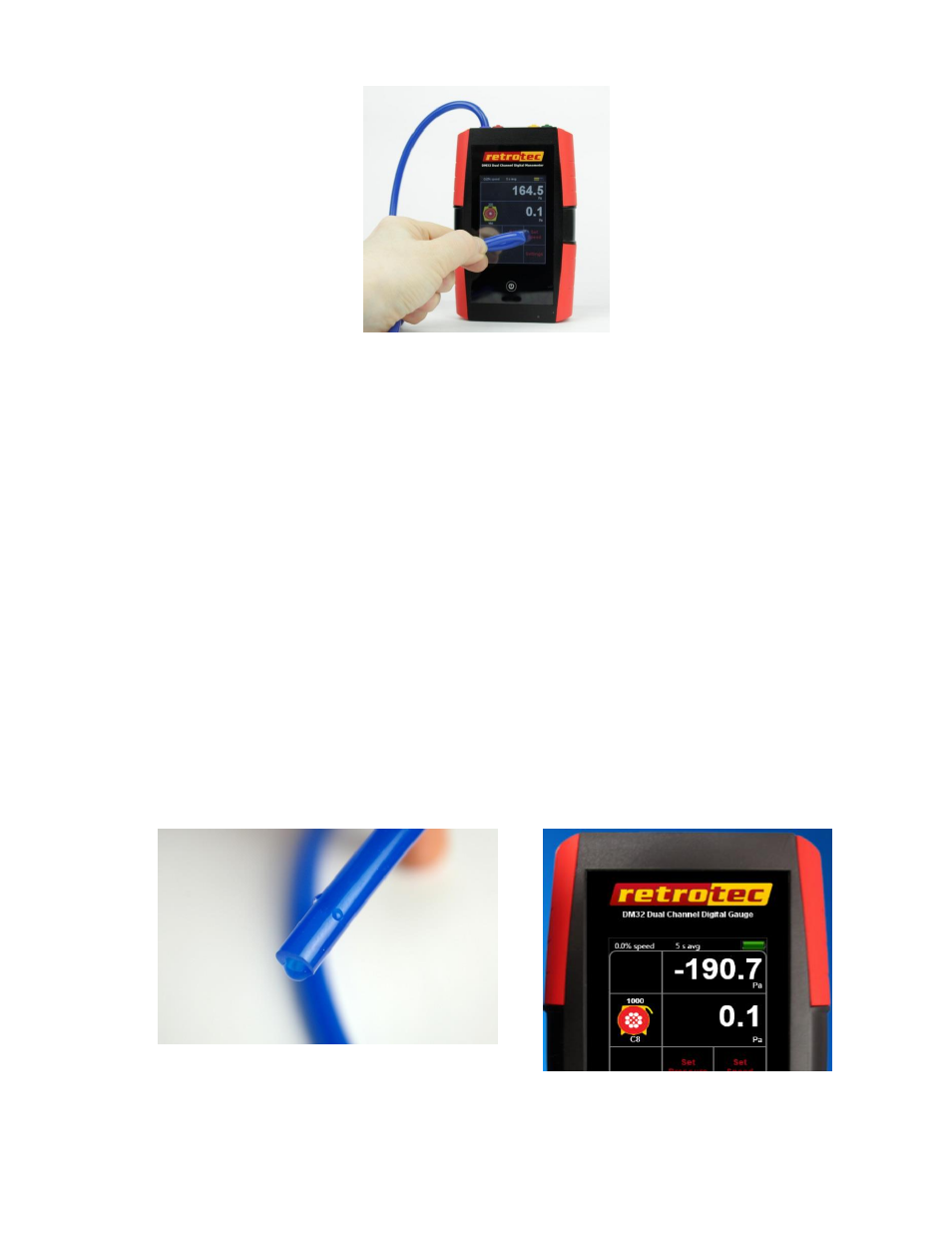Retrotec DM32 User Manual
Page 64

Page 64 of 94
©Retrotec Inc. 2014
Figure 68: Errors in pressure reading from a pinched tube.
It is possible to complete a Blower Door test with a pinched tube. It will appear as if the fan is creating a
pressure in the building, but in fact the results are way off. If the gauge begins to display an unusually high
or unexplained pressure, check the tubing to ensure that it has not been compressed in any way.
Be careful that no one steps on the tubes, or creates a kink in any of the lines while performing a
test. If this happens, wait a few seconds for the effects to subside before taking any readings from
the gauge.
Use the metal tube provided with the gauge to pass tubes through tight spaces (such as under
closed doors) to prevent pinching.
8.13
Check if large fixed errors are caused by water in the tube
Water can also cause significant errors if a drop is pulled into the pressure tubes. It is very easy to get a
water drop inside the end of a tube. Simply drag it over a shallow puddle of water, and a drop of water will
get pulled into the tube by capillary action. Notice in the Figure 69 how one drop of water in the end of the
tube is creating 190 Pascal pressure. It is possible to complete a Blower Door test with a water drop in the
end of the tube. It will appear as if the fan is creating a pressure in the building, but in fact the results are
way off. Particularly unusual behavior in the gauge could mean that there is water in the end of the tube.
Water can cause either a positive or a negative pressure, based on which way the drop of water is pulling.
If a drop of water is facing downward, it pulls out of the tube, creating a negative pressure (as displayed in
Figure 69). Point the tube upward, and the water drop falls back into the tube, creating a positive pressure.
Figure 69: Water in the reference tube (left); high fixed pressure due to water (right).
To fix this problem:
